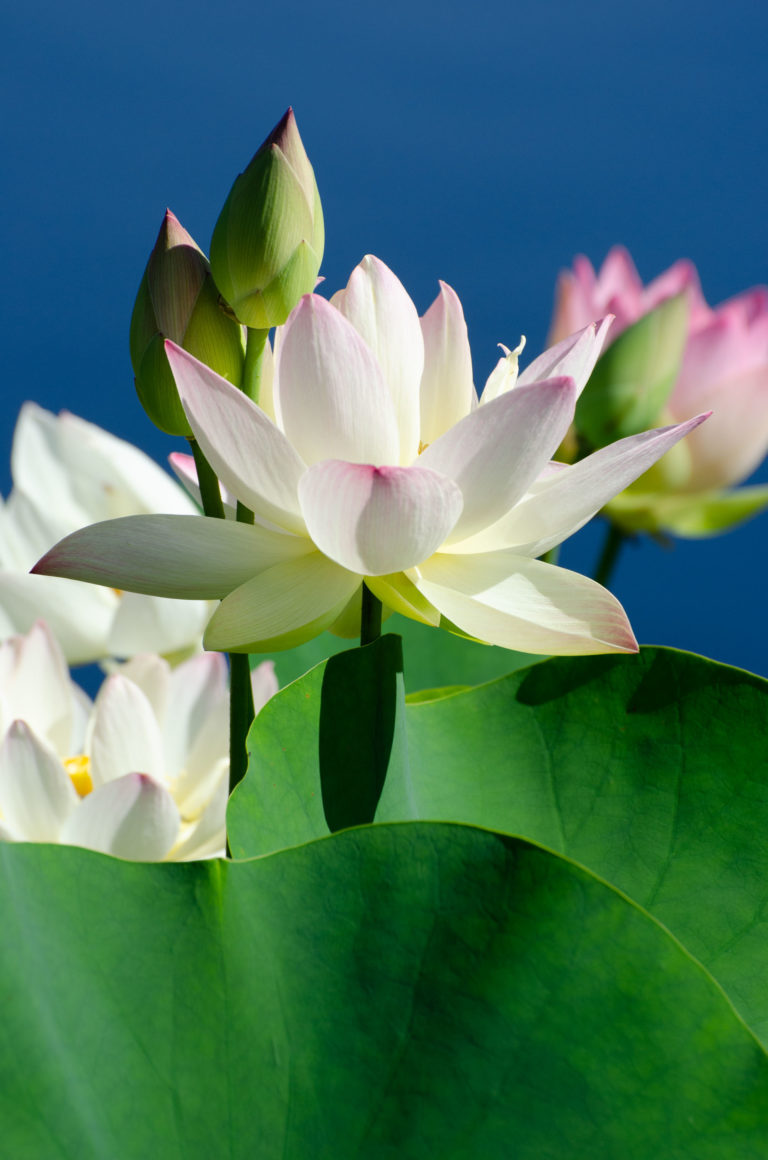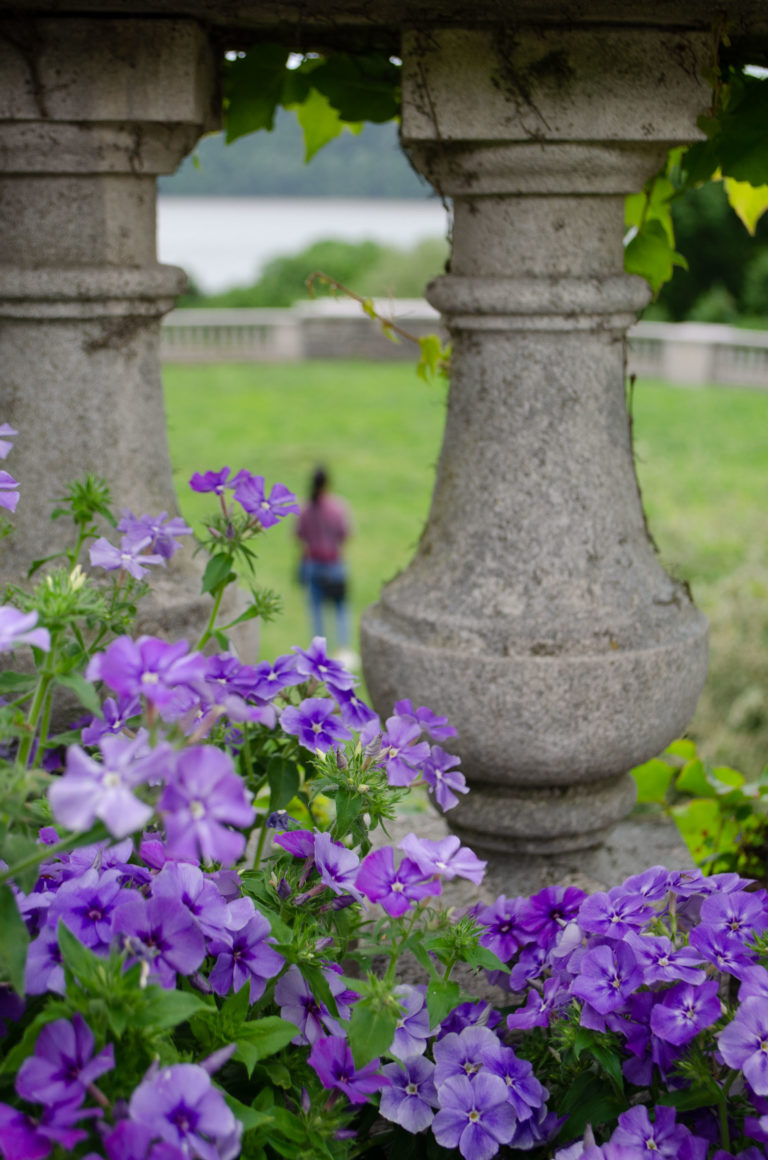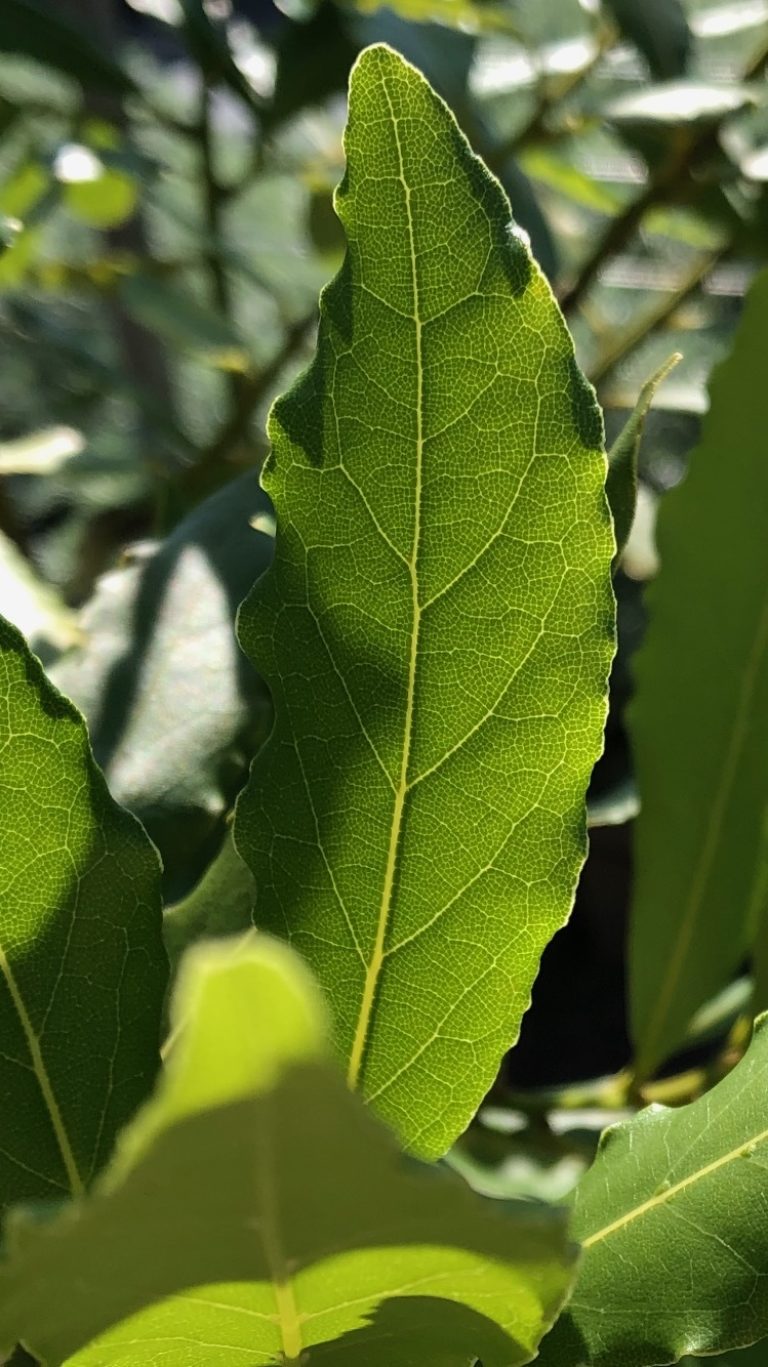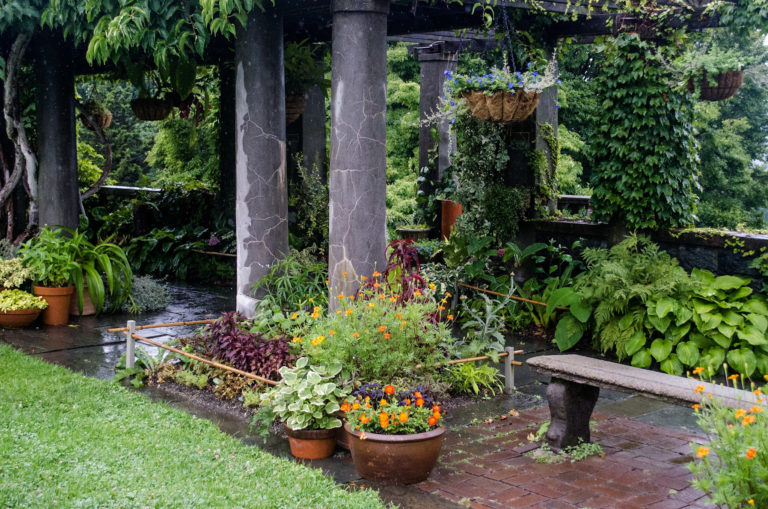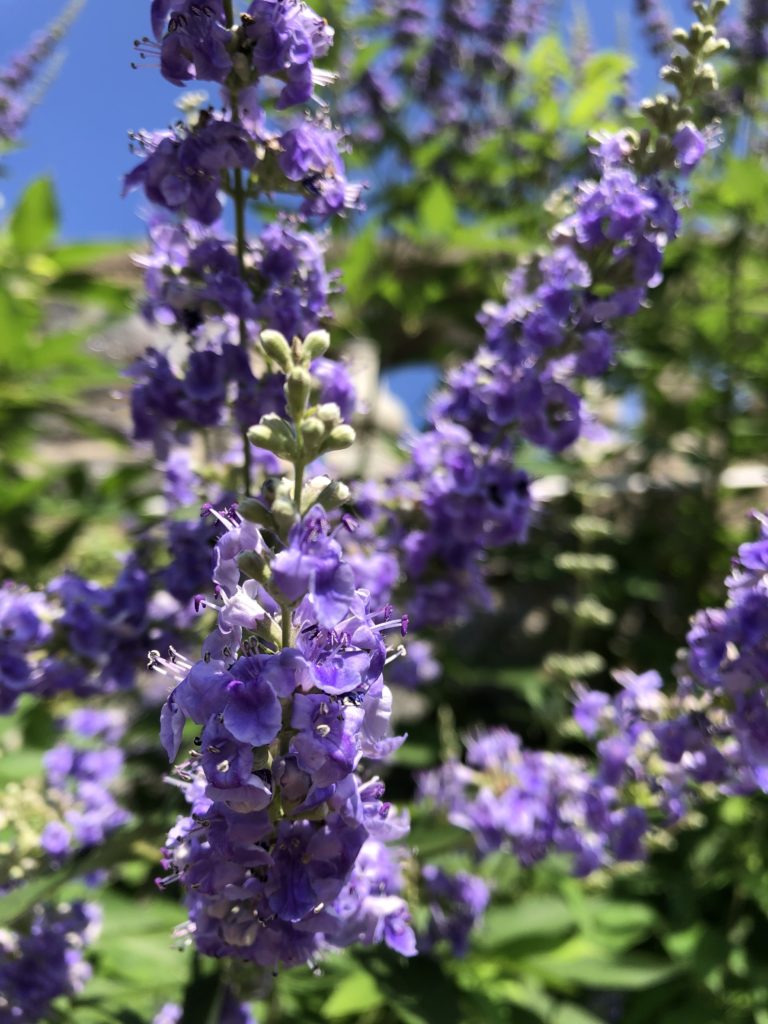
Chaste Tree (Vitex agnus-castus)
July 22, 2020The chaste tree (Vitex agnus-castus) is a large shrub that is only just winter-hardy in our climate.
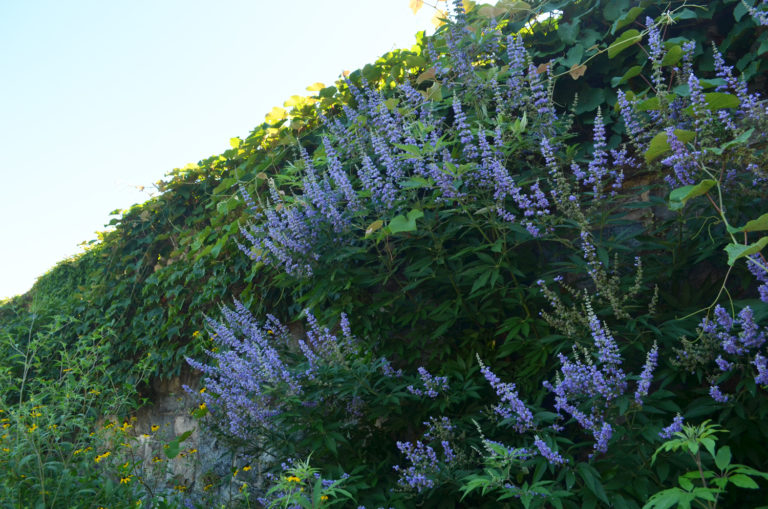
When grown with some protection, such as against the sunny wall below the Pergola and Great Lawn, however, it will produce masses of spikes of lilac-purple flowers late in the summer.
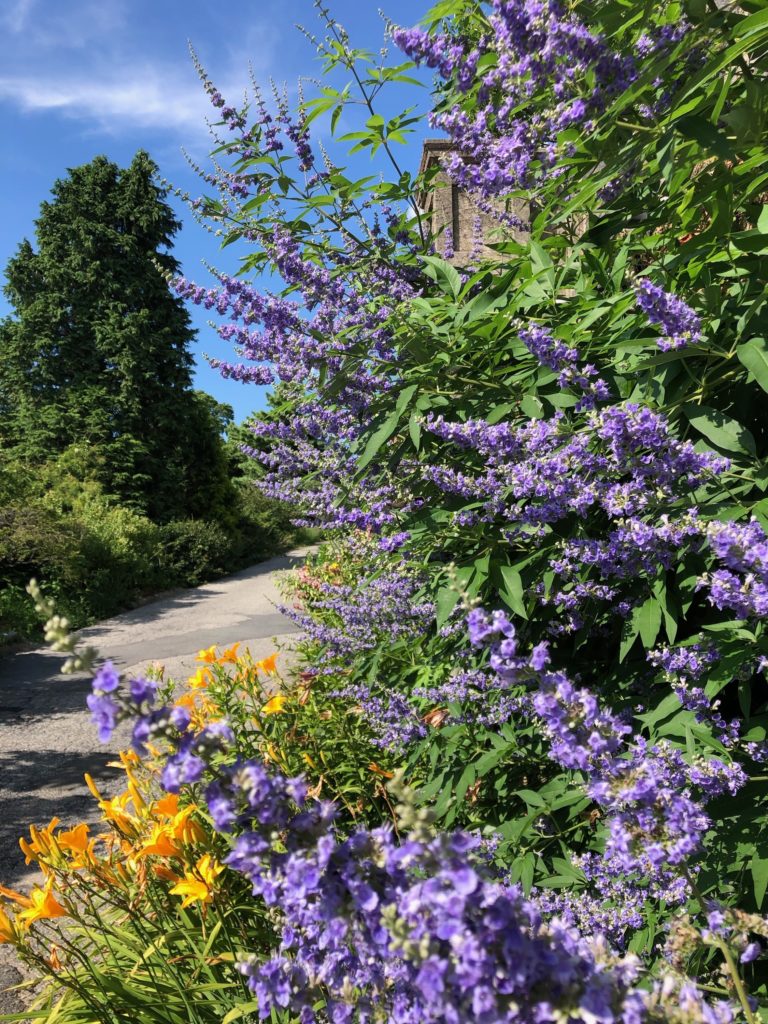
Pollinators, including bees, butterflies and even hummingbirds, love these fragrant flowers and may be seen busily collecting nectar on any warm afternoon.
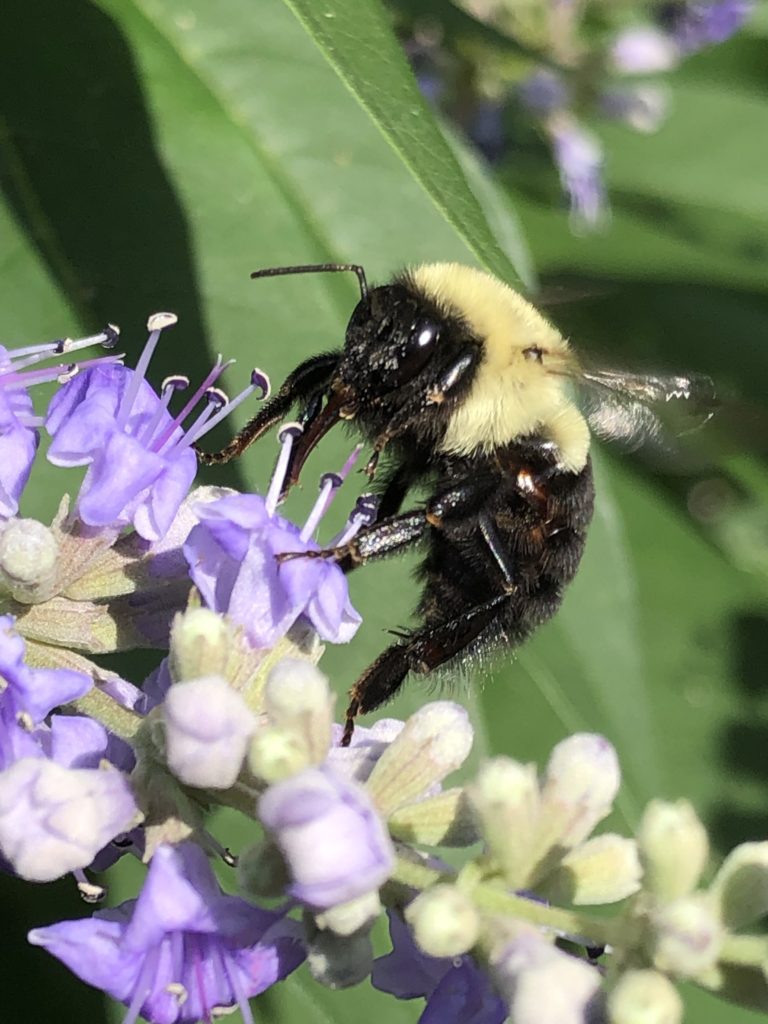
Originally from southern Europe, it can be found in many of the warmer parts of the world. We have two fine examples along our Lower Lawn Road, which runs below the Great Lawn and the Pergola. The first shot, dating back to 2017, is looking north towards the Pergola, just visible above the roadway.
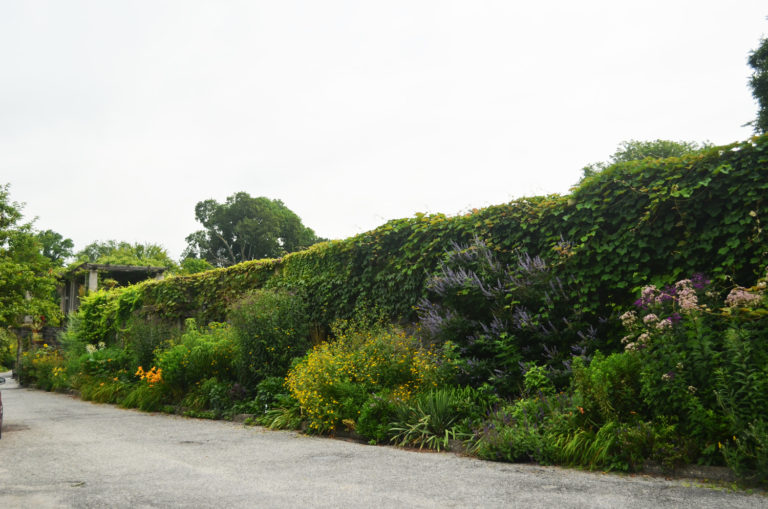
The second, also from 2017, is looking south toward Glyndor Gallery, barely visible in the far right of the shot.
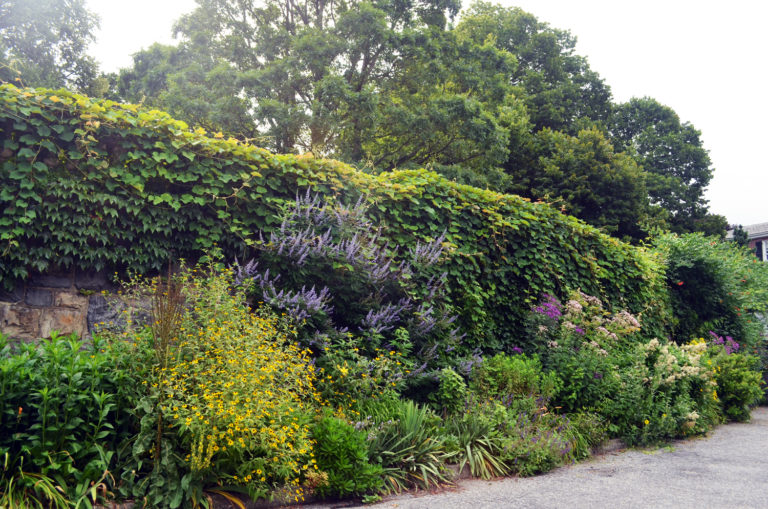
It has been called chaste tree for many centuries. Ancient Greeks, Romans and medieval monks all believed that taking a decoction made from the tree’s fruits and/or shoots would encourage chaste behavior.
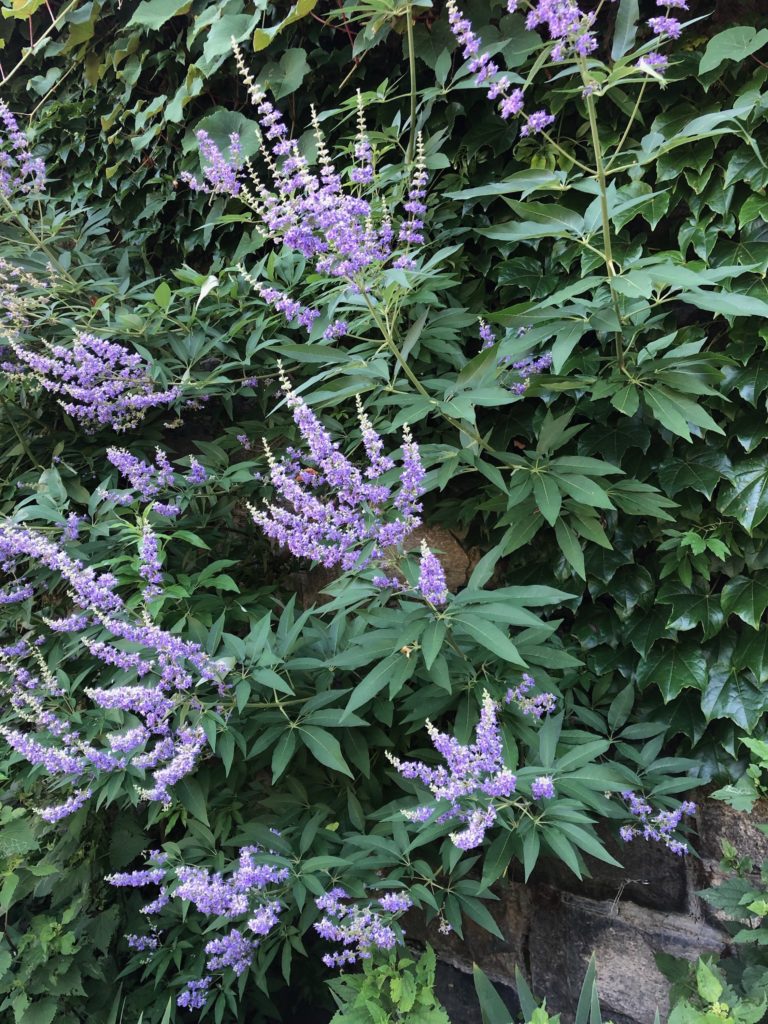
The work of Wave Hill’s recently retired Ruth Rea Howell Senior Horticultural Interpreter Charles Day, this post dates back almost three years ago on July 27, 2017. Charlie’s writing has a perennial quality, and we are delighted to be able to showcase his knowledge this summer with some new photos.
